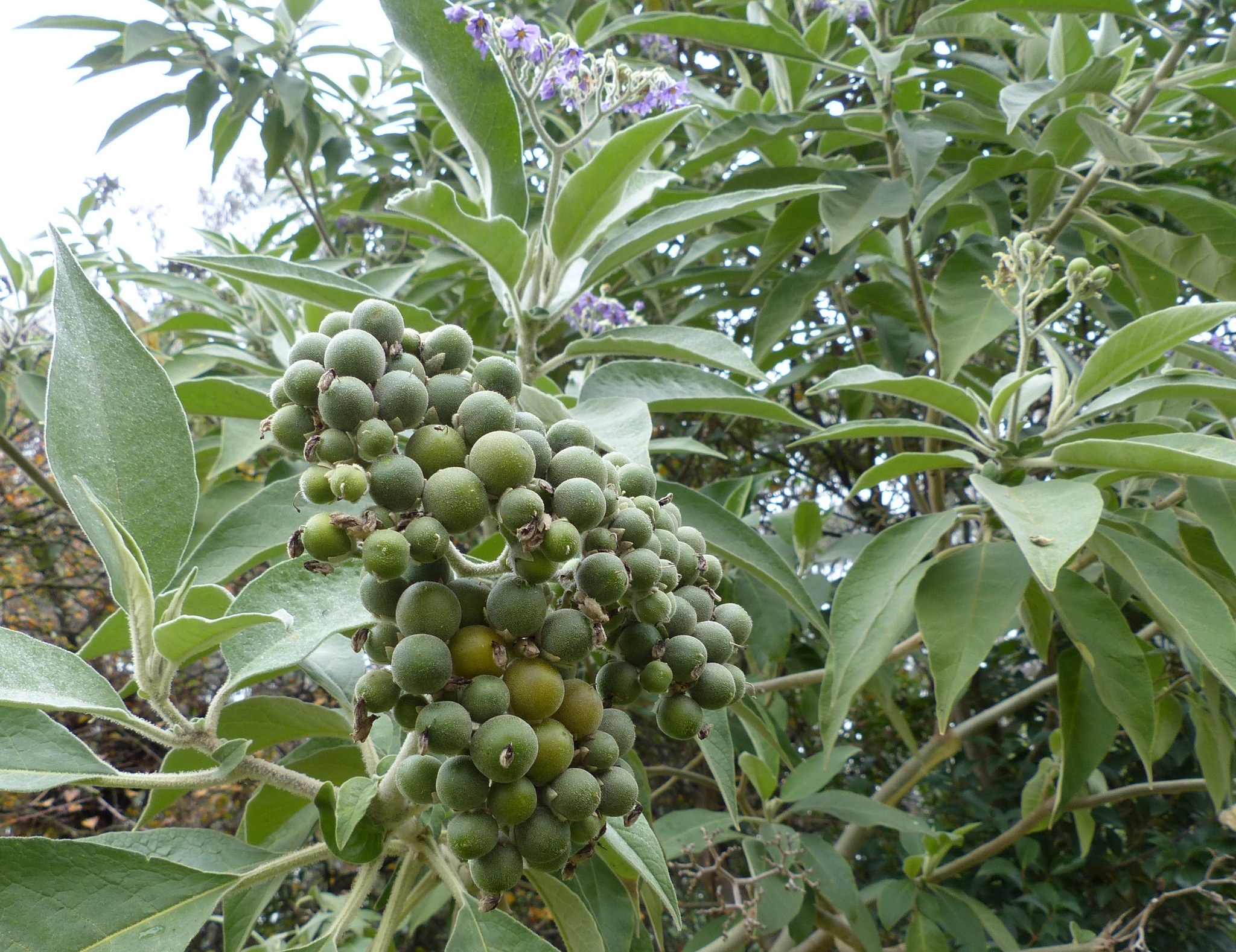
From the Latin solamen — solace or comfort, possibly referring to the reputed narcotic properties of the type species.
Annual or perennial, sometimes prickly herbs, shrubs or small trees, occasionally scrambling or climbing and sometimes spreading by suckers. Leaves alternate, sometimes paired, simple or pinnate, entire or lobed, stalked. Flower clusters highly variable in structure and position. Flowers mostly bisexual and regular. Calyx bell-, wheel- or cup-shaped, usually with 5 lobes and sometimes expanding in fruit. Corolla star-shaped, wheel-shaped or occasionally bell-like, mostly purple or blue, rarely white or yellow. Stamens 5, mostly equal, attached at the corolla throat.ovary mostly 2-chambered. Fruit a papery or fleshy, sometimes hard berry and sometimes enclosed by the swollen calyx.
Many species have become weeds, especially after fire, others are poisonous.
Seed or softwood cuttings.
Commercial plants include S. betaceum, Tamarillo; S. melongena, Aubergine, Eggplant, Jew's Apple, Brinjal; S. muricatum, Pepino; and S. tuberosum, Potato. Several species are sources of medicinal alkaloids used in contraceptive pills.
Anthers opening by a pore or small slit; fruit a berry.
About 1500 species, with a centre of distribution in tropical and subtropical C and S America and lesser centres in Australia and Africa. Australia has about 94 species, of which 87 are endemic.
Symon (1981b, 1994).
Source: (2002). Solanaceae. In: . Horticultural Flora of South-eastern Australia. Volume 4. Flowering plants. Dicotyledons. Part 3. The identification of garden and cultivated plants. University of New South Wales Press.
